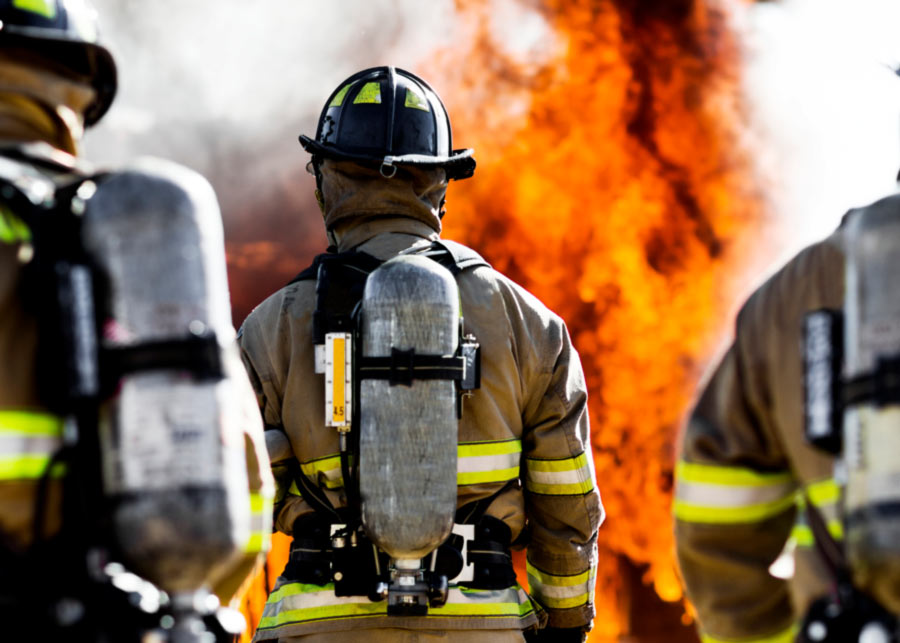By Jen Singer, with additional reporting by Lorraine Glennon
There’s long been a link between career firefighters and cancer, including skin cancer. Recent research looks more specifically at melanoma. Here’s what firefighters need to know.
Studies have suggested some surprising things that might increase your risk for skin cancer (besides, as we all know by now, our beautiful sun, the main cause). We delved into the research on several of these, which we shared in a series of articles. The first looked at drinking white wine. The second focused on some commonly prescribed medications. The third addressed three common medical conditions. This one takes a look at the already perilous job of being a firefighter. If you are one, or know someone who is, here’s what you need to know.
Firefighters risk their lives every day, whether running into burning buildings or battling out-of-control wildfires, but the menace doesn’t come just from the fire. They may face an increased risk for developing skin cancer, including melanoma, the most dangerous of the three most common types.
While studies have long shown a connection between firefighters and higher rates of cancers such as mesothelioma and lung cancer, the link to skin cancer was not identified until more recently. We first reported on this when a study published in 2017 in JAMA Dermatology of 2,400 firefighters in South Florida found that about 0.7 percent were diagnosed with melanoma and 3.5 percent had nonmelanoma skin cancers — higher rates than those among the general population of Florida. Firefighters were also found to be diagnosed with melanoma at younger ages — an average of 42 compared with 64 for the U.S. population.
In 2023, a JAAD review of five studies looked at melanoma risk in career firefighters. Four of the studies showed an increased risk in career firefighters compared with non-firefighters. The fifth study found an increased risk in older firefighters aged 55 to 74 compared with police officers. Only one study included female firefighters. Women still only represent about 5 percent of all career firefighters, according to the National Fire Protection Association (NFPA).
The review authors wrote that “firefighters’ exposure to carcinogenic combustion byproducts, such as polycyclic aromatic hydrocarbons, benzene, metals and polychlorinated biphenyls, has prompted concern for increased cancer risk.” When it comes to pinpointing risk for melanoma, they concluded that future studies could be strengthened by including not only data on exposure to carcinogenic chemicals but also firefighters’ exposure to ultraviolet (UV) light (much of their work occurs outdoors in daylight), as well as their sun protection behaviors and personal and family history of skin cancer.
Additional research shows that our steadily heating planet also increases the risk. Apart from all the other effects of a warming planet, more heat, and the pollution and ozone depletion that accompany it, also magnify the damaging effects of UV radiation on the skin. At the cellular level, scientists have discovered, damaged skin cells (which can develop into cancer) may react to heat stress by surviving longer, rather than “self-destructing” naturally as they would under lower temperatures.
The incidence of wildfires has increased in tandem with global temperatures; the evidence is there on our television screens during what now often seems to be a 12-month fire season in certain areas. The data confirm these impressions: According to the EPA, the area burned each year from 1983 to 2020 increased from about a million acres to 10 million. And the fire season has indeed lengthened, particularly in the Western U.S.
The blazes produce “very sticky” particulate matter containing carcinogenic substances that can get absorbed through the skin, according to Eva Parker, MD, assistant professor of dermatology at Vanderbilt University. “That is not to say that rising rates of skin cancer are solely due to climate change,” she says. “But we know heat can accelerate carcinogenesis in the skin.”
This is not just a problem in the United States. In an Australian study, firefighters had a 45 percent higher rate of melanoma over the course of their careers than the general population.
The occupational hazards of being a firefighter have led to the creation of laws that help them obtain disability benefits should they develop certain cancers, including melanoma. Most states have laws that create a presumption that a cancer diagnosis is job-related for career firefighters, but benefits vary and restrictions may apply. In almost all states, these benefits do not apply to volunteer firefighters.
Jen Singer is a health writer based near New York City. Lorraine Glennon is a Brooklyn-based writer and editor.
Articles in this series:
Can White Wine Increase Your Risk for Skin Cancer?
Are Your Meds Increasing Your Risk of Skin Cancer?
Can a Medical Condition Increase Your Risk of Skin Cancer?






